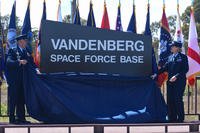Like many places around the country, the cold season has arrived on the Great Lakes. Operational seasonality is an ongoing reality for all who call the region home, and Great Lakes crews are all preparing for the ice to come.
Just as the summer months bring a busy schedule due to increased search and rescue and law enforcement cases, the winter brings a hectic schedule full of ice maintenance operations including search and rescue, ice-breaking and aids-to-navigation.
The 9th Coast Guard District’s aids to navigation system facilitates safe and efficient maritime activity in the Great Lakes and St. Lawrence Seaway region by marking safe passage for domestic, international, commercial and recreational vessel traffic. The Coast Guard manages 3,127 fixed and floating federal aids in the region and when ice forms there is a high probability of damage to these vital aids dotting the Great Lakes.
Operation Fall Retrieve – which involves 16 Coast Guard units and two contracted companies who are hard at work retrieving 1,282 navigational aids – is scheduled to be completed by Dec. 28. The aids, approximately half the region’s total, are taken out of service during the winter months due to decreased vessel traffic and to minimize damage from ice and severe weather.
“Operation Fall Retrieve is the operation for swapping out or pulling out the ATON before the ice season sets in,” said Lt. Cmdr. John Henry, commanding officer of Coast Guard Cutter Bristol Bay. “The normal ATONs are too big and gangly to withstand pressure from ice flow, so the ice would take them under the water and destroy them.”
The smaller, lighter and more buoyant buoys, known as wintermarks or ice hulls, are designed to actually ride underneath the ice when it comes, but still stay on location.
To accomplish the this mission, the district employs six Coast Guard cutters, five aids to navigation teams and five smallboat stations. These units are also joined by the Lamplighters, civilian employees who manage the inland waters of Northern Minnesota; Canadian Coast Guard partners; and the Saint Lawrence Seaway Development Corporation. The Coast Guard Auxiliary also helps inspect approximately 3,000 privately-owned aids to navigation in the region.
Operation Fall Retrieve is 88 percent complete as of today. Of the 1,282 aids scheduled to be worked during the operation, 961 have been either decommissioned for the season or replaced with winter marks. Crews are now in the home stretch as they continue to make the region safe for vessel traffic.
























